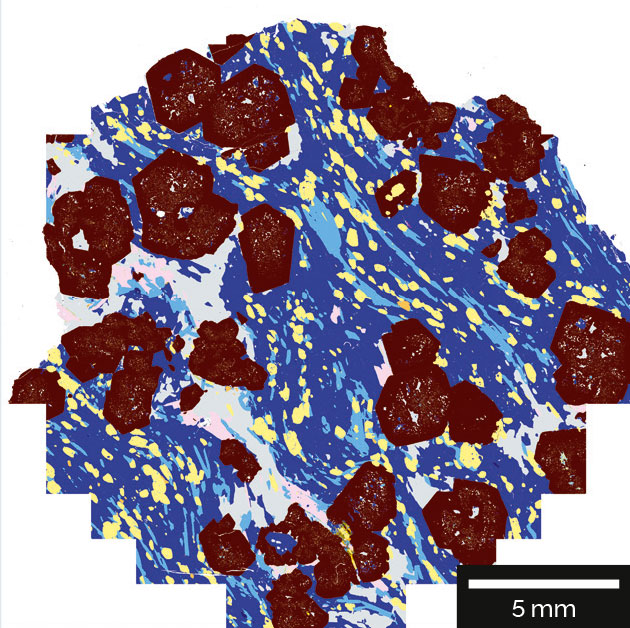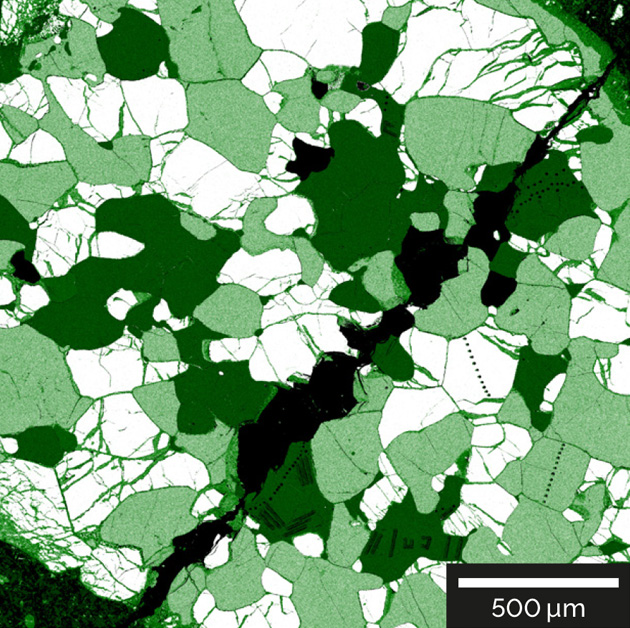TESCAN TIMA provides a versatile solution for petrographers and geoscientists, allowing them to perform much of their analytical work on this single solution. TIMA produces high quality, high accuracy mineral and chemical composition data, even for small concentrations of elements, to make rock classification and textural characterization fast and easy. Using elemental analysis to provide quantitative data for mineral identification, TIMA delivers objective and reproducible data that you can trust. And to assure that TIMA operators can get straight to work and work efficiently, TIMA’s operating system features built-in application-specific workflows, along with a database of virtually all International Mineralogical Association approved mineral species (about 5000 entries) to make the task of interpreting mineral presence significantly easier.
Key Benefits
- Identify and quantify minerals automatically—even without extensive experience—using algorithm-generated, or user-defined rules and the built-in mineralogical database
- Analyze thin-section scale samples and obtain reproducible data thanks to the 4 EDS detector system and TESCAN’s unique, high sensitivity spectral summing algorithm to detect low abundance elements
- Correlate high-resolution BSE images, elemental maps and cathodoluminescence in a single run
- Pinpoint the locations of specific minerals using TIMA’s automated search for minerals of interest
- Free-up instrument time for interactive microanalysis by taking advantage of the offline data processing capability with access to all elemental maps
- Understand chemical variability within entire grain populations as well as the bulk chemical sample composition using built-in EDS batch quantification
- Estimate the presence of elements undetected by EDS (e.g. Li, Be) using TIMA’s data processing software to identify phases based on the proportions of other elements and stoichiometric re-calculation
Applications
- Mineral microanalysis: resolve and identify fine grains using high spatial resolution imaging and elemental analysis
- Thermobarometry: obtain the coordinates of minerals or mineral pairs selected for further analysis using EPMA
- Geochronology: automated identification of minerals suitable for dating and automated, detailed cathodoluminescence imaging
- Rock classification: use a volumetric proportion of minerals to calculate the chemistry of rock — even fine-grained or glass-containing rocks
- Automated search for petrogenetically significant phases based on their EDS signature or BSE brightness (REE, PGM, precious metals)
- Provenance studies applicable to, for example, garnet or spinel group mineral chemistry in sedimentary rocks or archaeological artifacts
- Screening to select samples for further analysis with other advanced techniques (EPMA, LA-ICP-MS)
- Porosity quantification and pore association




